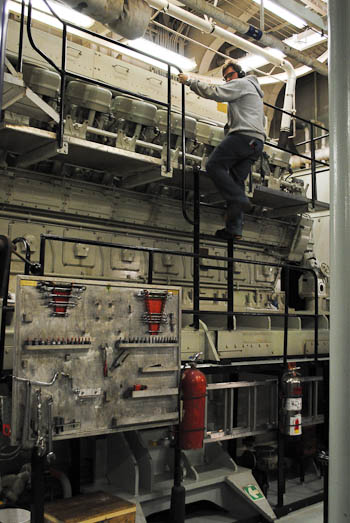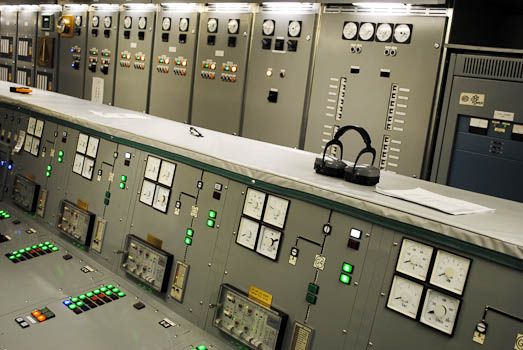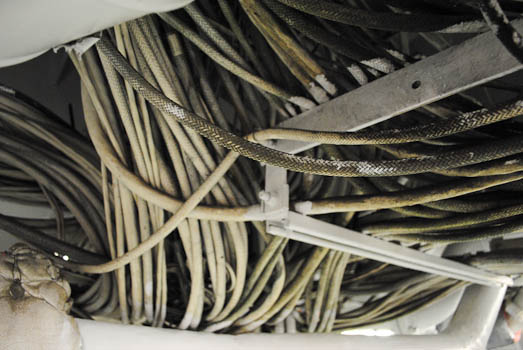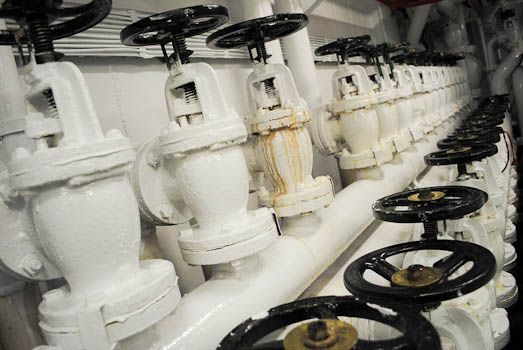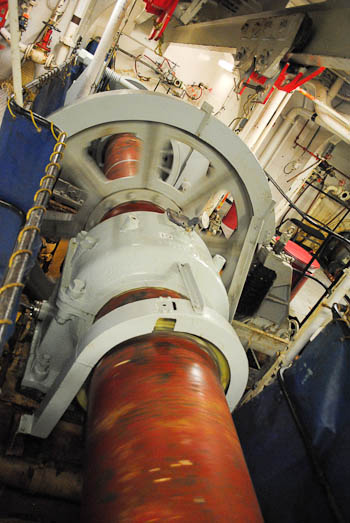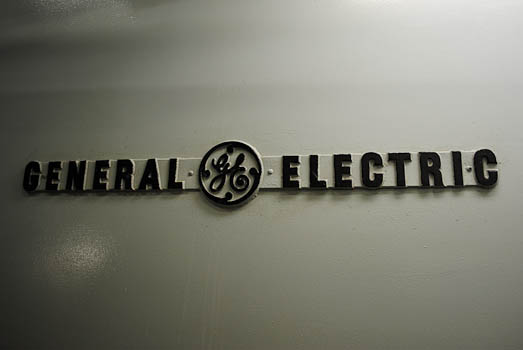Alex KainOctober 2, 2009Though their responsibilities and experiences vary, the many scientists, technicians, deckhands, navigators, cooks, and journalists aboard the CCGS Louis S. St.-Laurent have something in common. All depend on the engineers that keep the ship and its operations running. This is no easy task. The Louis plows through ice thick enough to support the weight of an office building. It requires propelling a 120-meter (394 foot) ship through some of the toughest sea conditions in the world, all while creating a cozy onboard atmosphere with adequate electricity, plumbing, waste disposal, and heating to allow all sailors and scientists the chance to get lost in a book or enjoy a mug of hot cocoa over good conversation, forgetting at times that they're on a ship in the middle of the Arctic Ocean. Being an engineer can be a thankless job. Your presence is most acutely noted when something goes wrong--say the electricity cuts or freshwater faucets begin dispensing rusty water--not when everything runs smoothly. The ship's engineers find a home in the engine room, an environment of constantly changing temperatures, smells, and sounds, all contained in a dense, mazelike space that could comfortably house a Minotaur or David Bowie.
The sixteen engineers on board know every cubic inch of this space. Each spends twelve hours per day in the engine room, combing every inch to make certain that all functions properly. At any time during the day, at least four workers from the engineering department are on watch to maintain the oily water separator, which purifies bilge water to send only seawater back to the sea; dispose of waste in the ship's garbage incinerator; perform chemical tests on boilers, which provide steam to heat the ship’s water; change oil pads; check fuel levels; maintain the seawater intake, which provides cold seawater to cool freshwater that then cools the engines; perform checkups on the evaporator to ensure people on board can drink; and perform hundreds of other inspections, tests, and repairs to ensure that the cooks can cook, the navigators can navigate, scientists can do science, and everyone can stay warm while sleeping at night.
Along with the rest of the ship, the engine room underwent a major renovation in 1993, which brought the ship's original 1960s design to modern standards. Outsourced to the German contractor MAK, the modernization created entirely new spaces in the engine room and added power to the ship's massive propulsion system. Though composed of millions of component parts, the basic architecture of the engine is similar to your typical car. Diesel fuel explodes in an engine, which produces energy that an alternator transmits to an electric motor that turns the propellers and powers the ship. The overall concept may be simple, but the ship operates on a scale more comparable to spacecrafts than individual automobiles. At their peak, the five engines of the Louis produce 30,000 horsepower, drawing fuel from a series of tanks capable of holding over 4 million liters (1 million gallons) to power three propellers, each of which has a diameter the length of a Lincoln Navigator.
In order to operate these propellers, the engines and all their component parts produce a lot of noise. The sounds, all muffled because ear protection is required while walking around the engine room, take cues from a concerto--the tat-a-tat-TAT of propeller turbulence tapping amid the whistle-like whirring of turbochargers and the bass vibrations of ice scraping against the hull. It is a symphony, fortissimo at all hours of the day. To keep this clamor contained to as small an area as possible, the engine room is insulated and the engines all sit on thick rubber pads. Still, the sound leaks into the lower floors of the ship, sounding like a neighbor who plays his booming, monotonous music too loudly all the time, every day. Though fantastically complex, Chief Engineer Ron Collier encapsulates the basic operating principle of the engine room. "When the light's red," he says, "that usually means things aren't so good." All text and photos property of Alex Kain. Last updated: October 7, 2019 | |||||||||||||||||||||||||||||
Copyright ©2007 Woods Hole Oceanographic Institution, All Rights Reserved, Privacy Policy. | |||||||||||||||||||||||||||||


